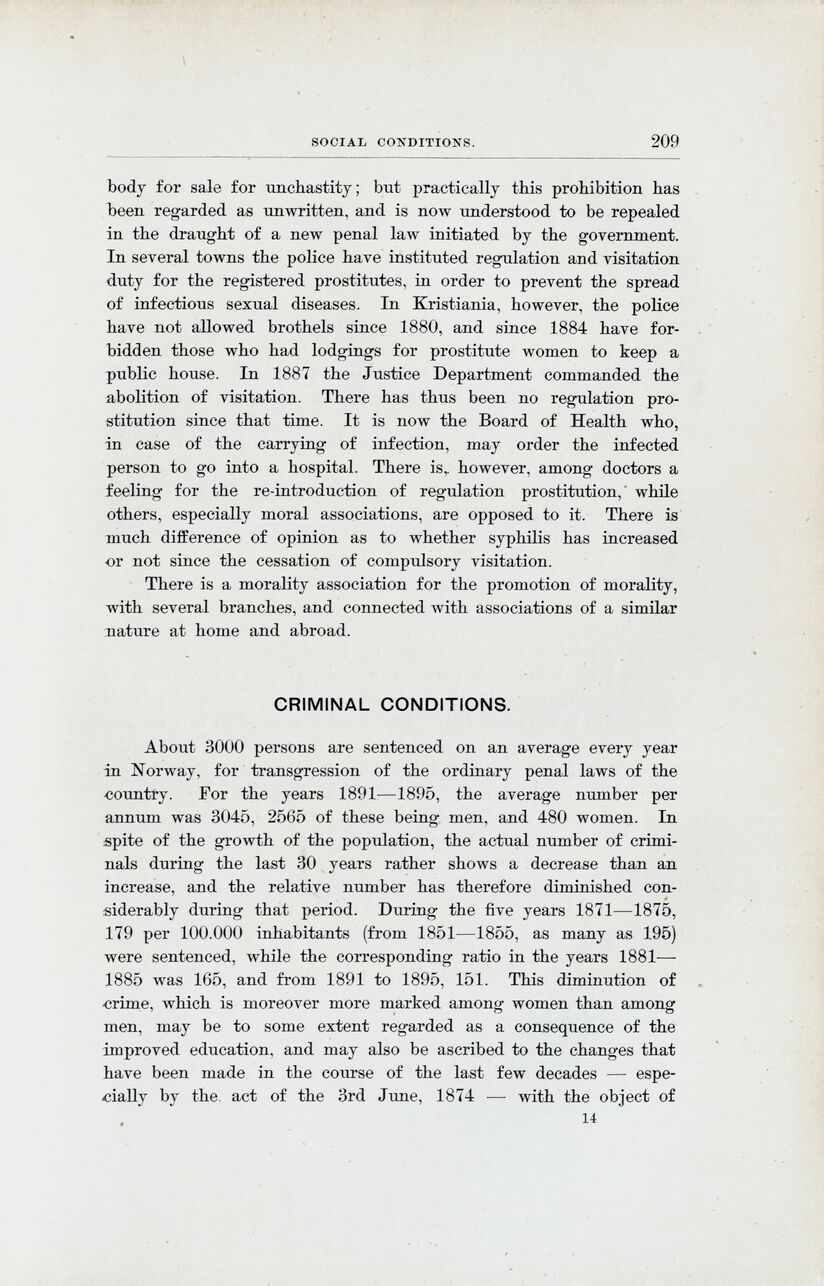
Full resolution (JPEG) - On this page / på denna sida - Social Conditions, by H. E. Berner

<< prev. page << föreg. sida << >> nästa sida >> next page >>
Below is the raw OCR text
from the above scanned image.
Do you see an error? Proofread the page now!
Här nedan syns maskintolkade texten från faksimilbilden ovan.
Ser du något fel? Korrekturläs sidan nu!
This page has been proofread at least once.
(diff)
(history)
Denna sida har korrekturlästs minst en gång.
(skillnad)
(historik)
body for sale for unchastity; but practically this prohibition has
been regarded as unwritten, and is now understood to be repealed
in the draught of a new penal law initiated by the government.
In several towns the police have instituted regulation and visitation
duty for the registered prostitutes, in order to prevent the spread
of infections sexual diseases. In Kristiania, however, the police
have not allowed brothels since 1880, and since 1884 have
forbidden those who had lodgings for prostitute women to keep a
public house. In 1887 the Justice Department commanded the
abolition of visitation. There has thus been no regulation
prostitution since that time. It is now the Board of Health who,
in case of the carrying of infection, may order the infected
person to go into a hospital. There is, however, among doctors a
feeling for the re-introduction of regulation prostitution, while
others, especially moral associations, are opposed to it. There is
much difference of opinion as to whether syphilis has increased
or not since the cessation of compulsory visitation.
There is a morality association for the promotion of morality,
with several branches, and connected with associations of a similar
nature at home and abroad.
<< prev. page << föreg. sida << >> nästa sida >> next page >>